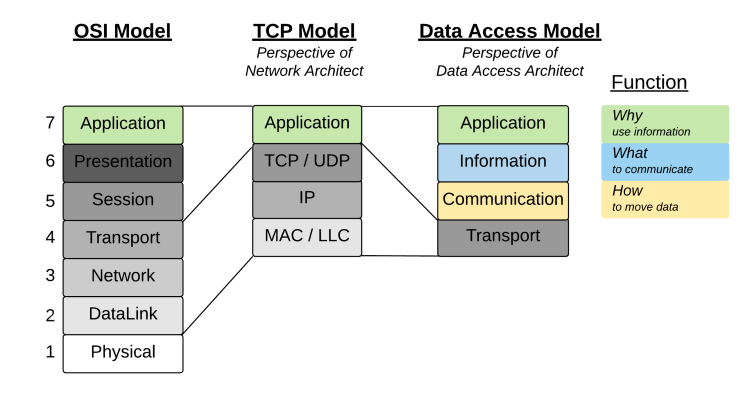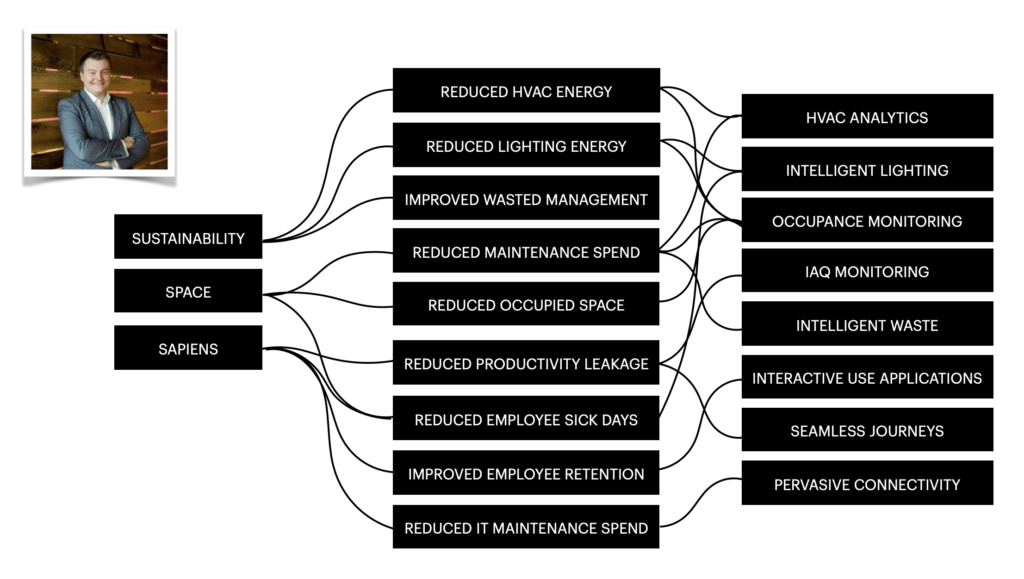
Earlier this year I facilitated a retrofit-themed round table of developers, owners and operators at Cisco’s City of London HQ with help from author and ex-Arup Smart Building Consultant Jim Read. As a follow-up, we co-wrote an article about the talking points that had emerged for Smart Buildings Magazine you can read here. That was mostly framed around the role of retrofitting in the drive towards net zero, but also highlighted a key challenge that is a backdrop to this blog:
It is worth noting that the drivers for creating and justifying a smart building, whether for retrofit or new build, have changed significantly in recent years. A decade or two ago most Smart Building initiatives were driven from the bottom up by technology manufactures, engineers and building contractors. They provided building environmental systems to address the needs of the building and those maintaining them.
The emphasis now for Smart Building realisation is to adopt a top down approach where the needs of building occupants is the starting point. Their requirements and expectations have placed ever increasing challenges on work space designers and technology providers. It follows that there are now many more stakeholders involved and the whole journey to Smart has become much more complex as a result.
I mention this because I recently read an article on LinkedIn by Matthew Parris about How OPC UA and MQTT Prevent Interoperability. What interested me was to see who was liking and commenting on it because that represents a stakeholder group. It’s seemingly one mostly comprised of those from mechanical electrical engineering and involved with ‘plumbing’ or designing, commissioning and deployment of the technological foundation in the broader sense of that term, i.e. at the (master) systems integration coalface and where that meets enterprise networking.
Apart from being struck by the buzz word bingo card array of acronyms (e.g. MQTT, DAM, TCP, UDA, MAC, LCC, QoS and so on), I was struck by a number of things including whether the interoperability problem Matthew perceives is a straw man. It’s just that I have noticed when scratching the surface of a technological position there is rarely any real neutrality. Solution providers have technology and ‘design philosophy’ preferences that are usually linked to their business models, which includes (value added) reseller agreements, formal partnerships and informal alliances, etc.
That issue aside, I thought the way Matthew framed the interoperability issue he perceives is still from the bottom-up and technology-first. I think something similar is true of the recent Smart Buildings and Sustainability Forum that seemed to be a conversation between a similar stakeholder group, rather than one that helps plug the gap between the bottom-up and top-down mentioned in the extract above.
What would have been more interesting was if this group of stakeholders discussed Interoperability, and the designing and building of the technological foundation more broadly, in the context of some minimum viable solution for smart enablement that can be built upon and scaled. And particularly in retrofit and with their thoughts on the technology direction of travel to help future proofing and clearly linking of all that to use cases/needs.
That kind of lean start-up thinking has already been adopted in workplace strategy and design, e.g. the minimum viable office concept that employee engagement specialists Leesman talk about (see more here). And that can definitely be linked to the top down and connected to back to office challenges of tenants, as well as the blurring of lines between smart buildings and smart offices as represented by Leesman were acquired by tenant experience solution provider HqO last year.
Matthew Marson at JLL Technologies has also been talking about design thinking methods and agile methodologies in his column for Smart Buildings Magazine (see more here), as well as what interoperability is arguably for with his framework for smart building ROI (see here):

I just think that this kind of joining the dots between the bottom-up and top-down is better way of resolving what are often asymmetries between the assumptions of technologists and those of the market.



